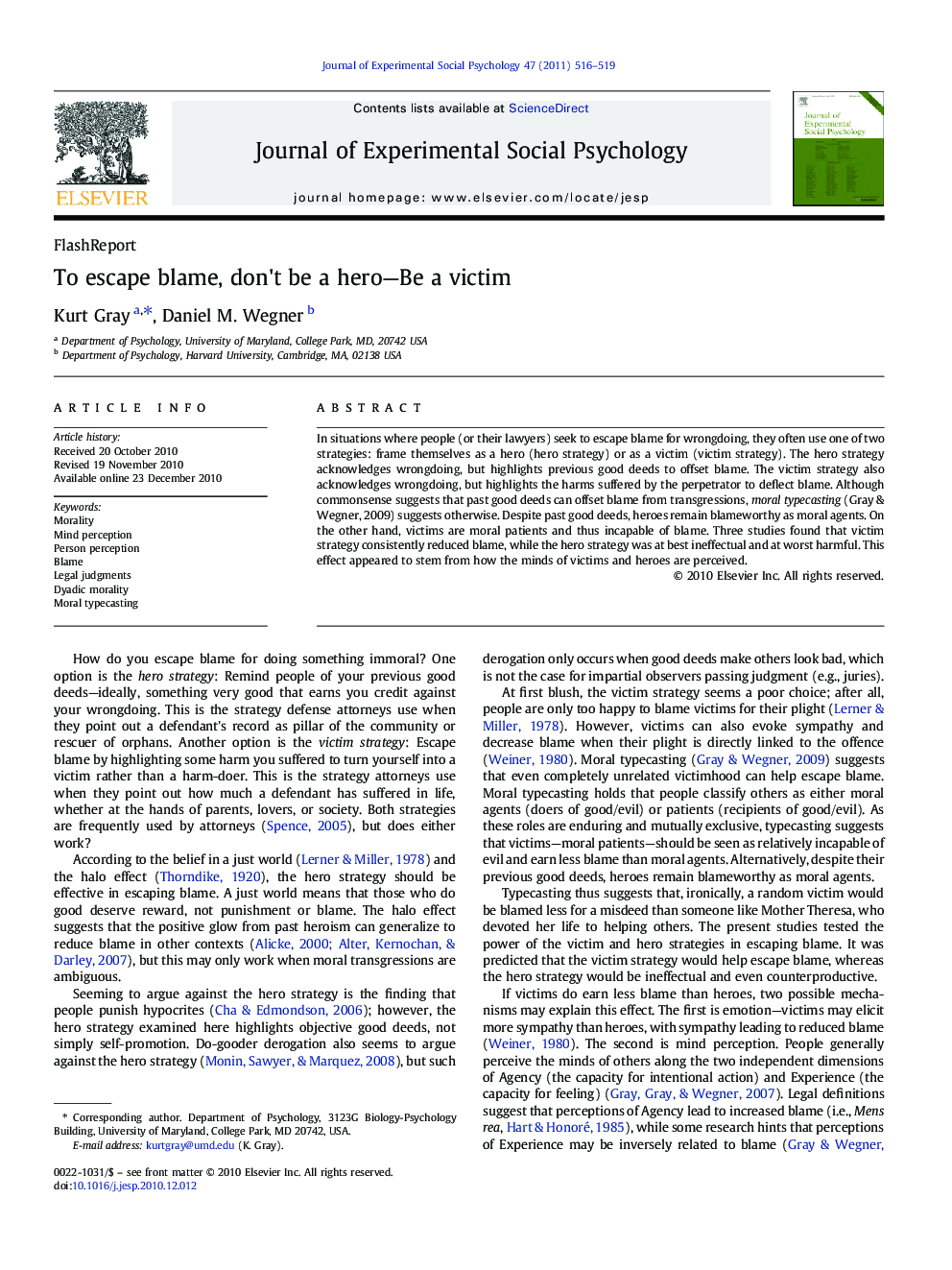| Article ID | Journal | Published Year | Pages | File Type |
|---|---|---|---|---|
| 10468681 | Journal of Experimental Social Psychology | 2011 | 4 Pages |
Abstract
In situations where people (or their lawyers) seek to escape blame for wrongdoing, they often use one of two strategies: frame themselves as a hero (hero strategy) or as a victim (victim strategy). The hero strategy acknowledges wrongdoing, but highlights previous good deeds to offset blame. The victim strategy also acknowledges wrongdoing, but highlights the harms suffered by the perpetrator to deflect blame. Although commonsense suggests that past good deeds can offset blame from transgressions, moral typecasting (Gray & Wegner, 2009) suggests otherwise. Despite past good deeds, heroes remain blameworthy as moral agents. On the other hand, victims are moral patients and thus incapable of blame. Three studies found that victim strategy consistently reduced blame, while the hero strategy was at best ineffectual and at worst harmful. This effect appeared to stem from how the minds of victims and heroes are perceived.
Related Topics
Life Sciences
Neuroscience
Behavioral Neuroscience
Authors
Kurt Gray, Daniel M. Wegner,
